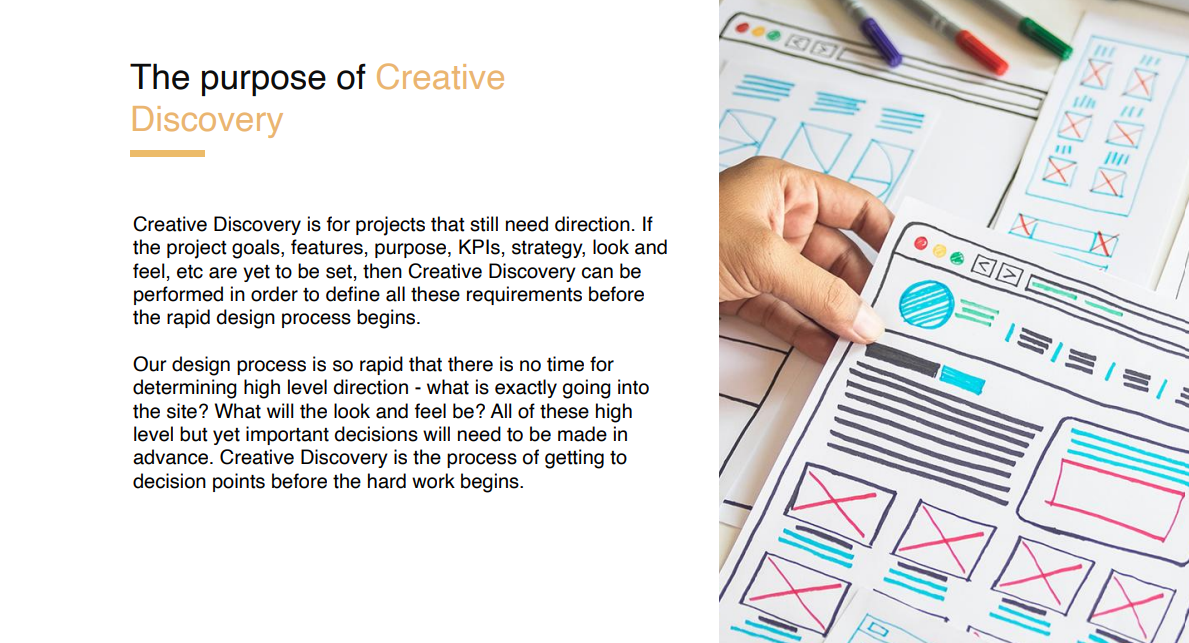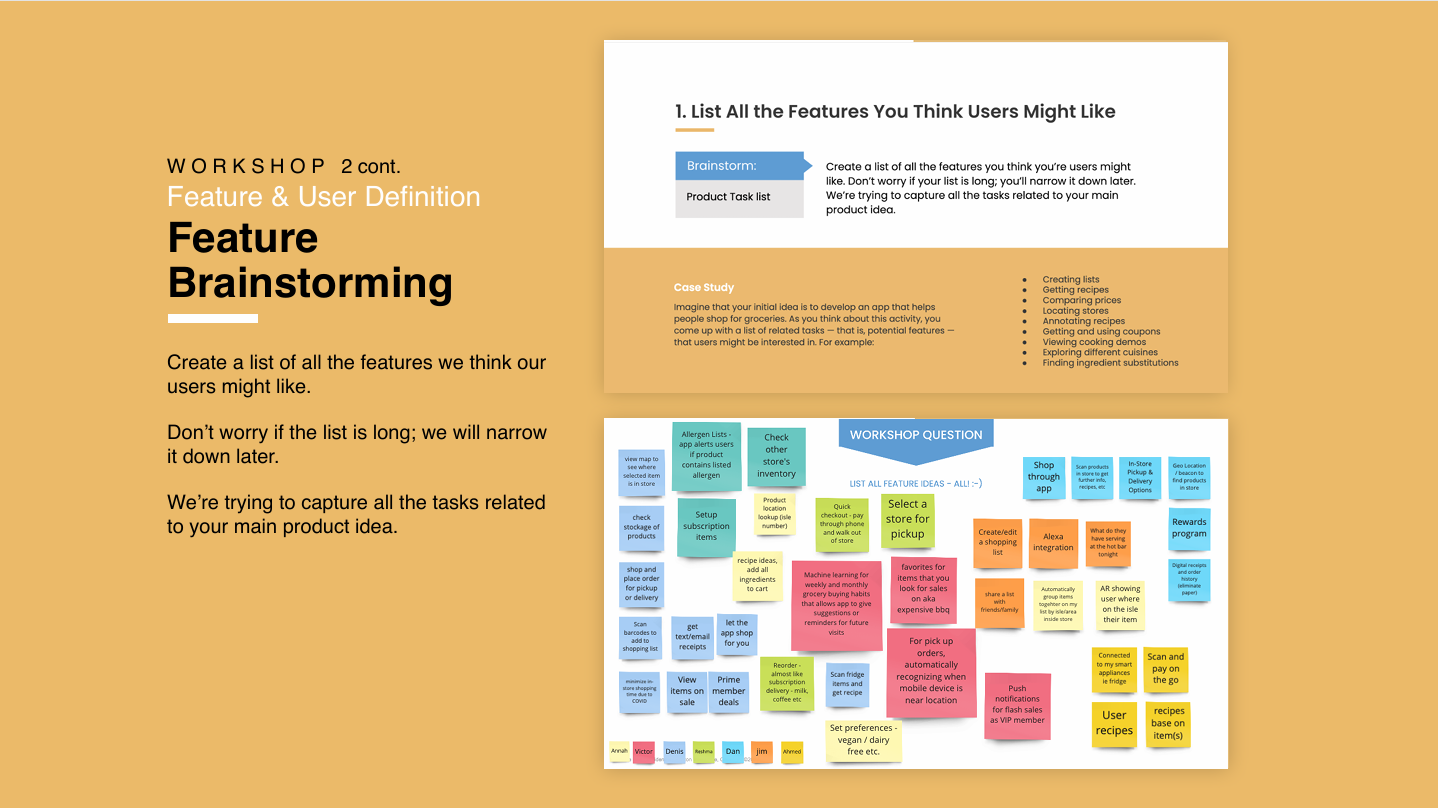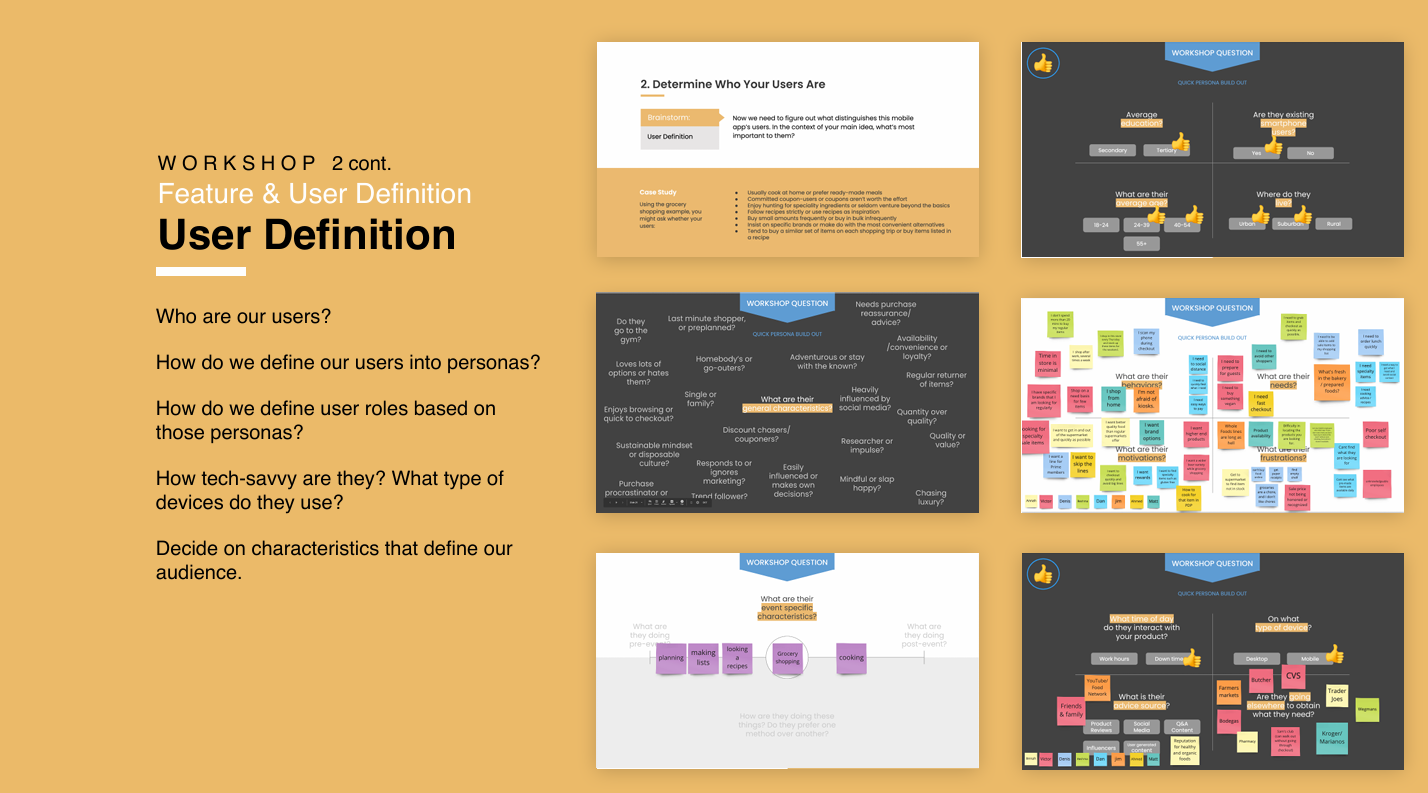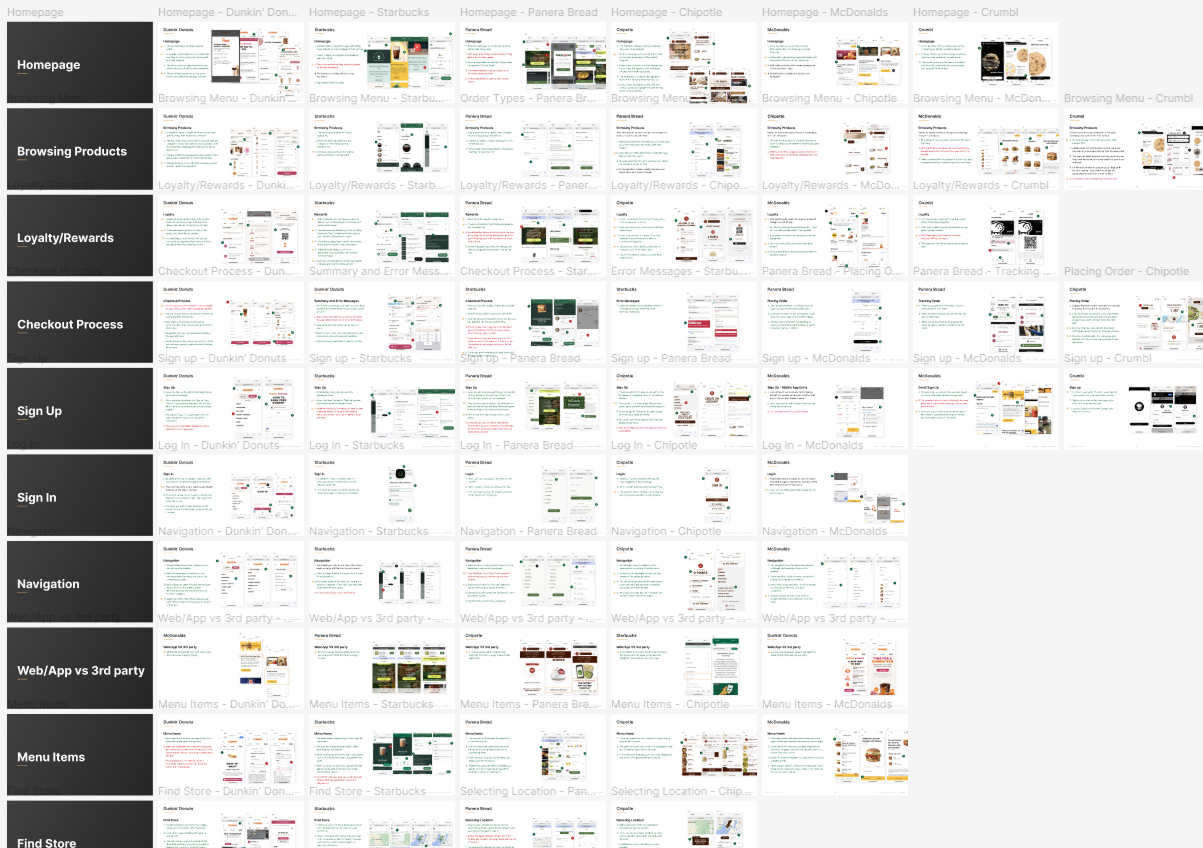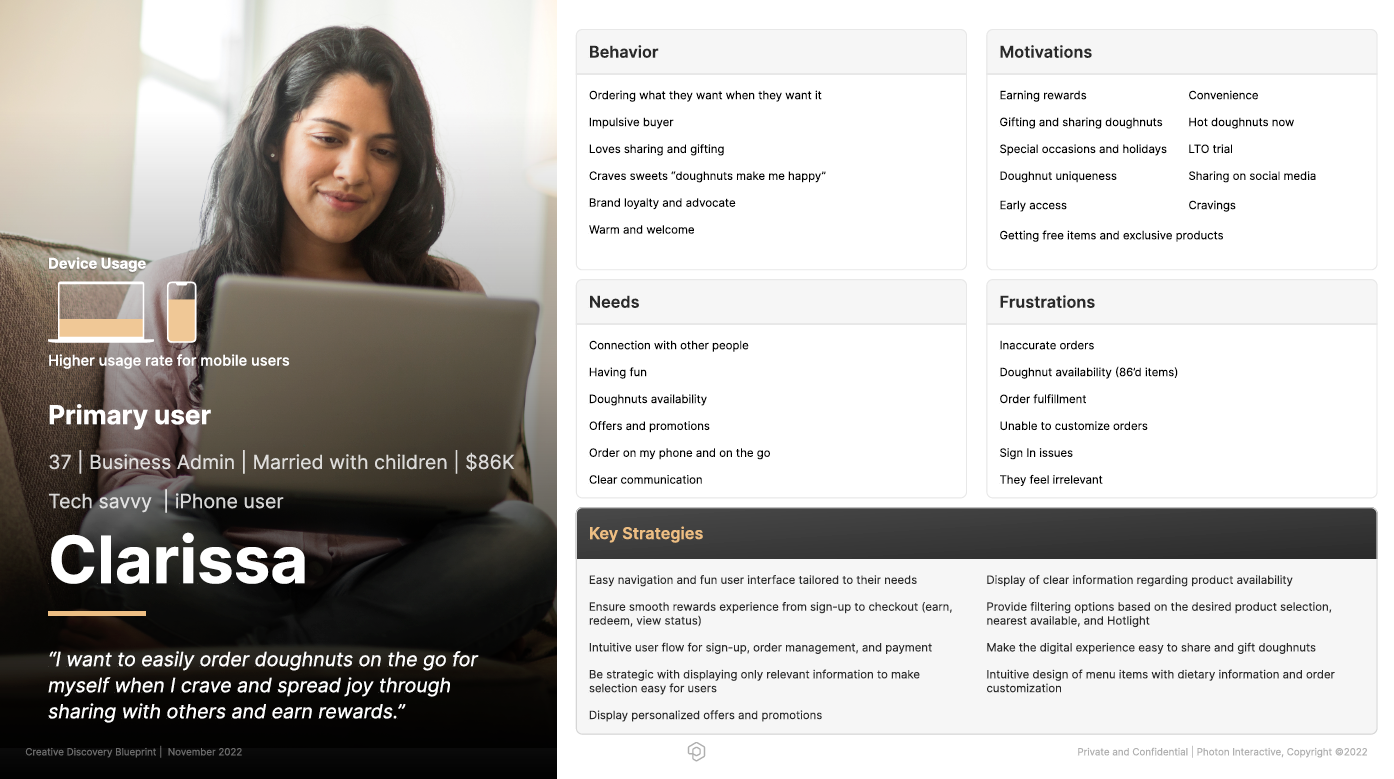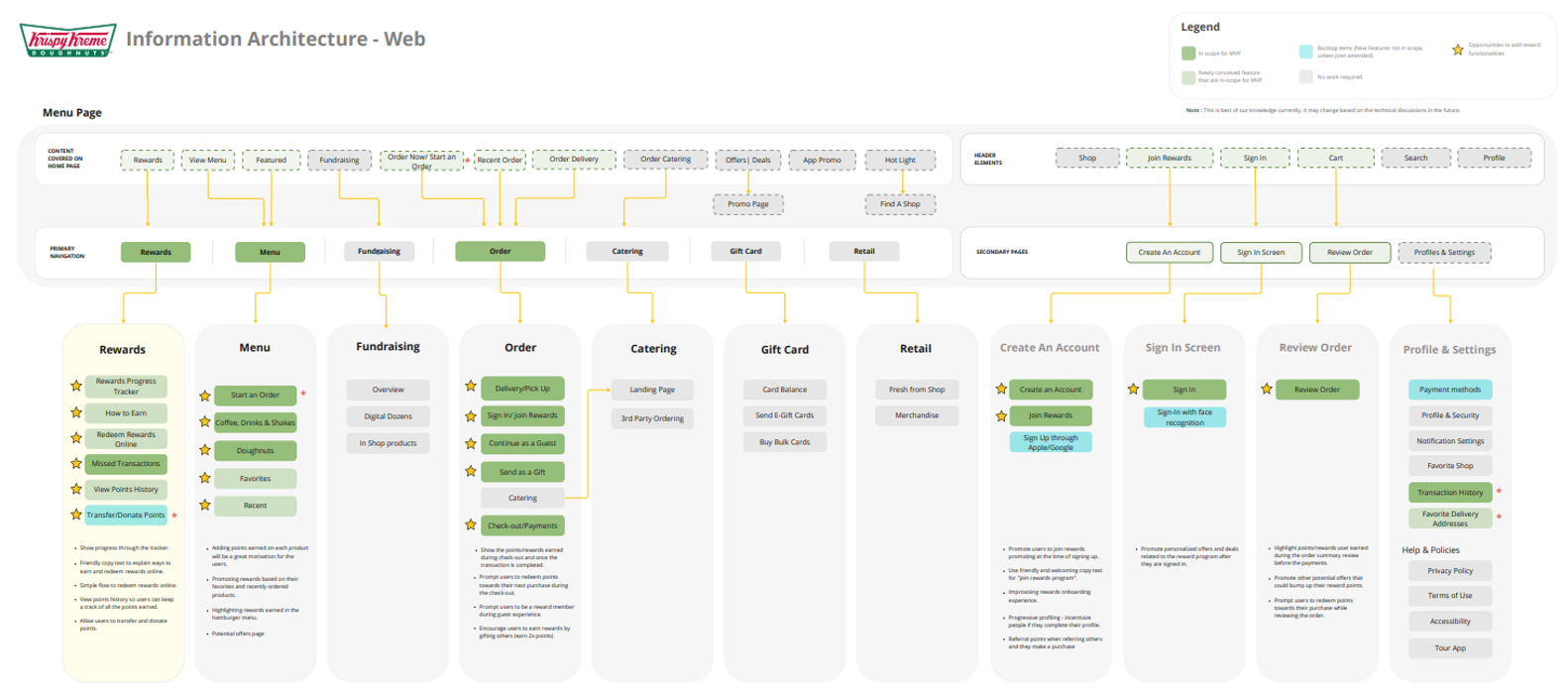Creative Discovery
Key User Pain Points & Solutions
- The core structure and purpose of the loyalty program.
-
Business needs: Clarifying Krispy Kreme’s goals, expectations, and success
metrics for the program.
-
User persona, needs, motivations, and frustrations – Identifying the ideal customer.
-
Competitive Landscape: Analyzing other loyalty programs to identify industry
standards, unique opportunities, and potential differentiators.
-
Pain Points: Understanding current challenges faced by customers when engaging
with Krispy Kreme, both online and in-store.
-
Success Metrics: Defining key performance indicators (KPIs) to measure the
program's effectiveness and ensure continuous improvement.
From Creative Discovery to Product Launch
Definition Statement
“An intuitive tool to reward generous people who spread joy through sharing Krispy Kreme.”
The definition statement is driven primarily by valuable client feedback. It guides the
purpose of our rewards program. It serves as a constant reminder of our primary objective,
helping us make informed decisions and ensuring we stay focused on building a meaningful
experience. By adhering to this North Star, we can avoid the addition of unnecessary
features and maintain the core essence of our rewards program.
Workshops with Stakeholders
During the creative discovery phase, I led a series of workshops with the client to gather
insights and align expectations. I was in charge of creating the discovery schedule and
plan. This phase not only helped us understand the client’s needs but also ensured the
client had a clear understanding of what to expect from the UX process and the team.
Additionally, it allowed us to clarify the promises made during the sales process and assess
what we could realistically deliver.
In most projects I’ve worked on, I’ve had the opportunity to conduct user research. However,
for this project, the scope was determined by what the client chose during the sales
process. The client opted out of user research, so we relied on gathering feedback directly
from them and made informed assumptions to guide our decisions.
Key Insights from the Client Discovery Phase
Primary Persona: Clarissa
- Demographic: Busy, married woman with children.
-
Needs: She needs the ability to order doughnuts on the go for her family, coworkers, or
special events.
- Motivations: Earn and redeem rewards conveniently via the app or in-store.
Clarissa, a busy mother, needs a quick and easy way to order doughnuts for her family,
coworkers, and events. She values earning and redeeming rewards effortlessly, whether
in-store or via the app.
KPIs and measuring success
To drive meaningful design decisions, it was crucial to identify key performance indicators
(KPIs) that aligned with both business objectives and user needs. We conducted a focused
workshop with key stakeholders to outline the KPIs that would measure the program’s success
and directly inform design strategies. Additionally, we collaborated with the client to
gather their recommended KPIs, ensuring they guided the UX and design process while
providing clear metrics to track success.
- User Sign-ups: Number of new members joining the program.
- Engagement Rate: Frequency of app interactions and reward redemptions.
- Retention Rate: Percentage of returning users over time.
- Purchase Frequency: Increase in visits and purchases per customer.
- Redemption Rate: Percentage of earned points that get redeemed.
- Customer Lifetime Value (CLV): Evaluating long-term customer worth.
- Churn Rate: Identifying drop-off points and reducing member attrition.
Selecting KPIs that reflected both user engagement and business growth ensured the loyalty
program continuously evolved to meet customer expectations while achieving Krispy Kreme’s
strategic goals.
Information Architecture
We aimed to create an information architecture (IA) that reflects the current structure
while identifying opportunities for improvement, ensuring users can efficiently achieve
their primary tasks. We presented the architecture to the client, gathered feedback, and
refined it accordingly.
Journey Map
Creating a journey map helped us identify current user pain points and uncover opportunities
for improvement.
Current and Future Journey Map
We created current state and future state journey maps, helping us identify user pain
points, opportunities for improvement, and highlight the user’s journey through the
experience to better understand their struggles.
User Pain Points and Opportunities for Improvement
Some of the pain points we discovered through our research included:
Wireframes
By refining wireframes and user flows, we crafted an intuitive, engaging loyalty experience
that boosts customer retention and brand loyalty.

